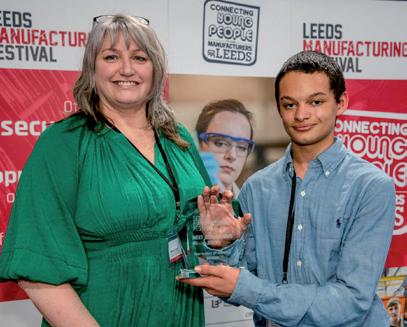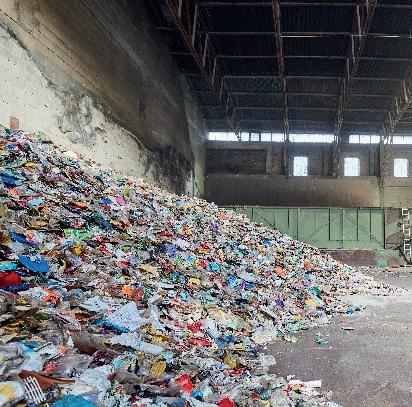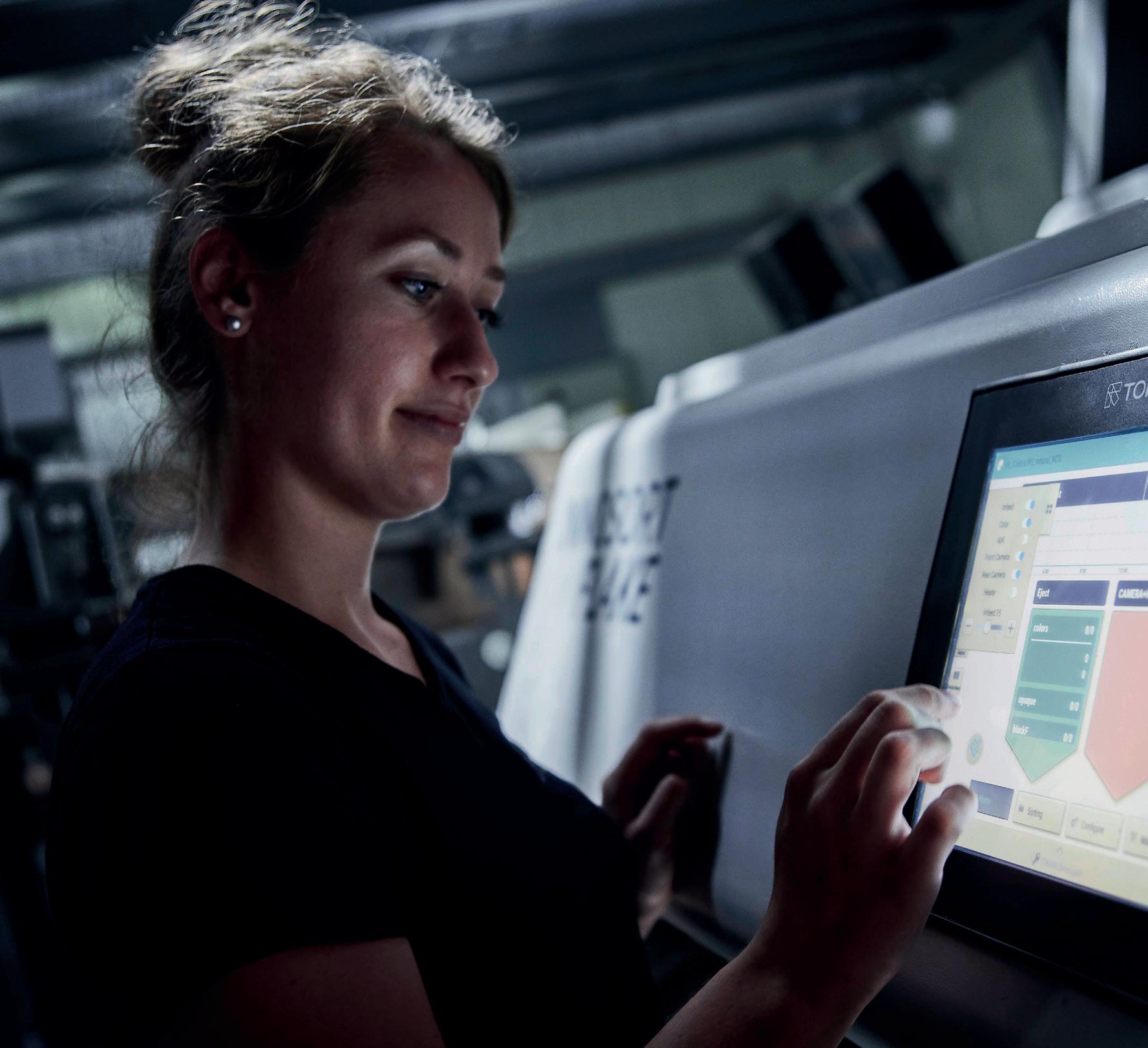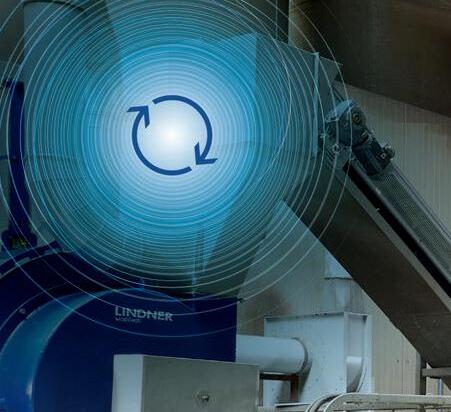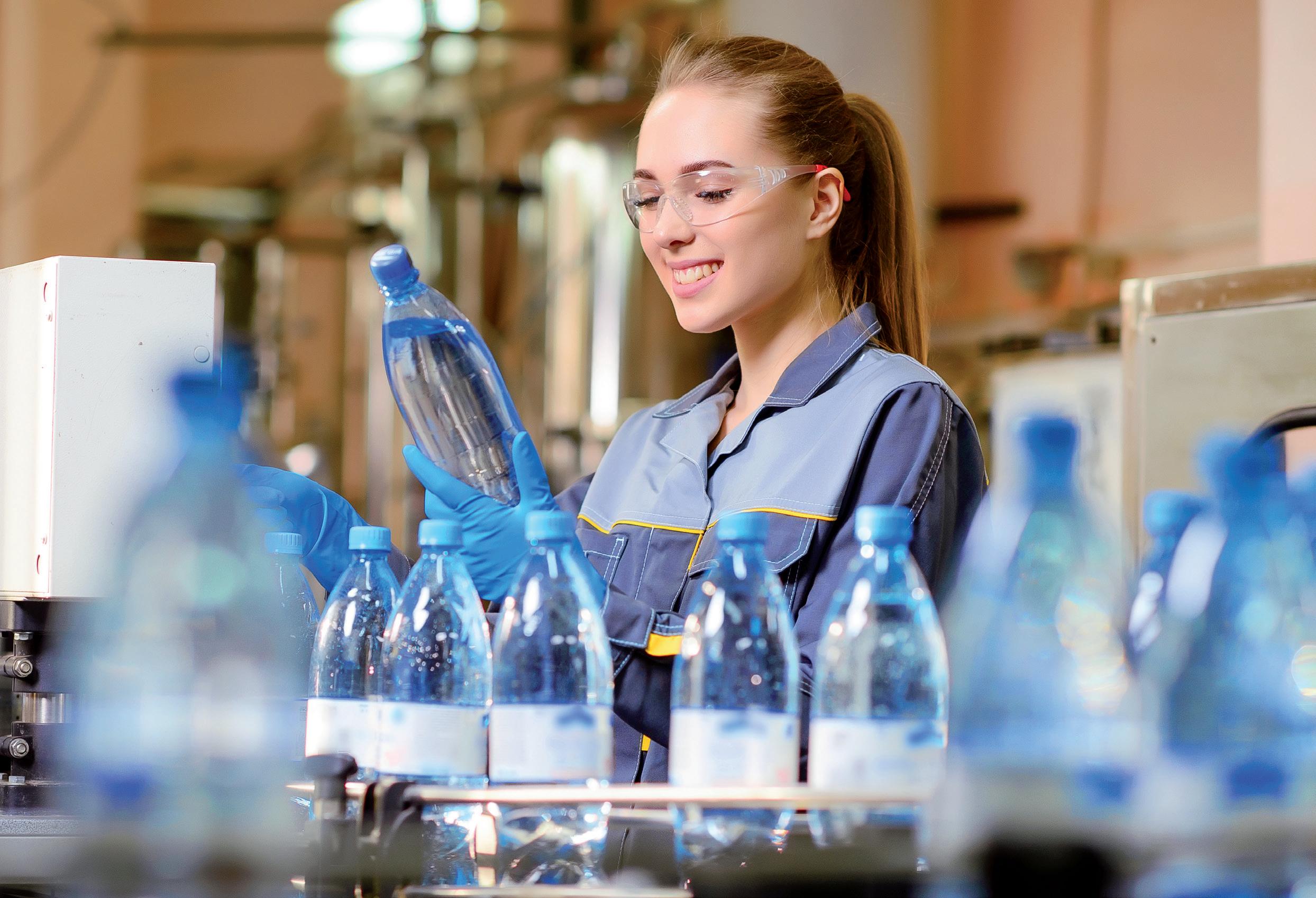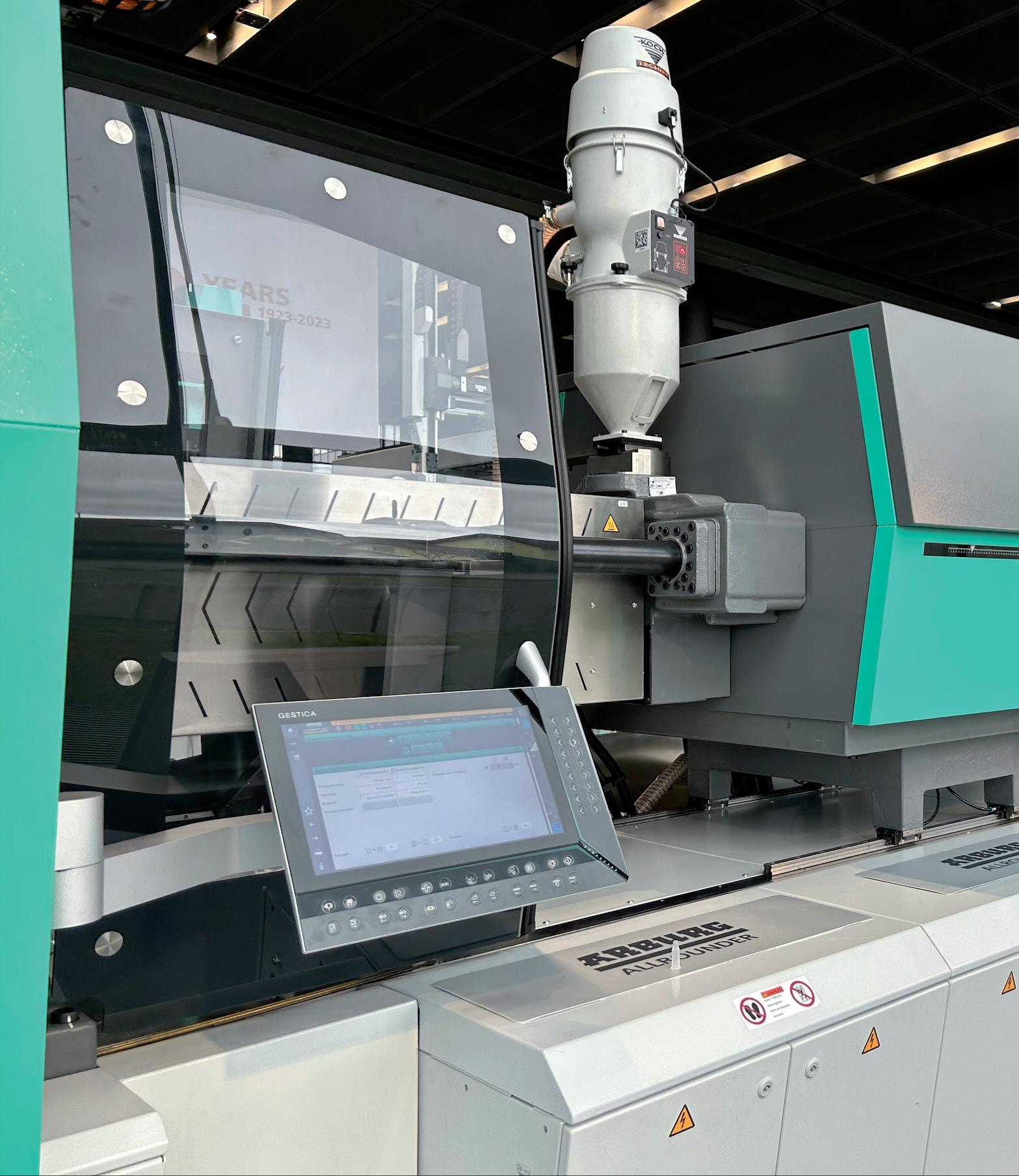
8 minute read
How antimicrobial additives make for more innovative designs
from BP&R Mar 23
The technology works by inhibiting the growth of microorganisms like bacteria and mould. This not only compliments hygiene protocols, but also helps to combat common issues like unpleasant odours, discolouration, and premature aging of the product. Incorporating BioCote technology helps to deliver innovation in how medical devices are made, ensuring that they are cleaner, longerlasting, and more effective than ever before.
Antimicrobial technology works 24/7 to reduce bacteria within a product. It is changing the game when it comes to preventing microbial growth. It works by disrupting and preventing the growth of microorganisms, creating an inhospitable environment for them to thrive and reproduce.
There are three known mechanisms through which BioCote technology interacts with microorganisms to aid in the preservation of medical plastics, prevent surface-tosurface cross-contamination, and extend the lifespan of medical devices. It all starts with silver cations which puncture bacterial cell walls and forms pores, effectively stopping cellular respiration and disrupting metabolic pathways. This process generates reactive oxygen species that further harm the bacteria, making it no match for BioCote technology. BioCote then disrupts the bacteria’s DNA and its replication cycle once the silver ions enter the cell, inhibiting further microbial growth by up to 86% in as little as fifteen minutes.
Additives specialist BioCote claims it is raising the bar for the standards of medical devices, by integrating antimicrobial agents into medical plastics. Hannah Mullane, social media and content executive at BioCote writes.

Silver has been used for centuries as a powerful antibacterial agent. However, there are concerns around its safety in relation to nano-silver applications. We don’t supply any materials on a nanoscale level and everything we offer is a registered biocide.
The integration of BioCote antimicrobial technology into medical plastics does not change the mechanical or physical properties of the plastic, so it can be used in a wide range of medical applications without the need for any modifications. The technology is versatile, allowing the treatment of a whole host of engineering and commodity polymers, as the antimicrobial technology can be processed at temperatures of up to 600°C. BioCote technology also carries food approval status, as well as being safe for drinking water applications.
Formulated into a concentrated powder or polymer masterbatch, BioCote’s range of antimicrobial additives can be integrated into any polymer material or polymer blend. As such they are suitable for incorporating into every production process, whether that’s polymer compounding, injection moulding, extrusion, roto-moulding, or 3D printing, to name but a few.
Dependent upon the type of polymer in your chosen application BioCote may recommend a polymer specific masterbatch, delivering optimal compatibility. This is where our in-house regulatory and chemistry teams come inthey can help identify the most compatible additive for your specific product needs, ensuring that you get the best possible results every time, removing any need to change any of the existing processing parameters, or have any negative effect on your production cycle time.
All the while there will be no difference on the shrinkage level or any change in the colour or gloss level of your final product, as the addition rate can be as low as 1%.
Navigating the chemical industry can be challenging due to strict regulations set by the European Chemicals Agency (ECHA).
ECHA oversees a variety of legislation, which defines active substances, biocidal products, and treated articles. Active substances must be listed on the Article 95 list to be supplied into Europe, while biocidal products and customer end use products with a primary biocidal property must be listed on the Article 89 list of the Biocidal Products Regulation (BPR). However, treated articles are exempt from BPR registration.
In the US, the use of non-agricultural pesticides is regulated by the Environmental Protection Agency (EPA) through the Federal Insecticide, Fungicide, and Rodenticide Act (FIFRA). The Registration, Evaluation, Authorisation and Restriction of Chemicals (REACH) is the central regulation that sets the standard for most EU chemical regulations. It has a broad impact on the chemical industry as it standardises the evaluation criteria for chemicals, including the assessment of potential hazards, and places the responsibility on companies to provide, identify, and manage the risks associated with the substances they manufacture.
By integrating antimicrobial agents into medical products, they help to reduce crosscontamination when used alongside good hygiene practices. The technology is versatile, allowing it to be used in a wide range of medical applications without the need for any modifications to existing tooling.
By inhibiting the growth of microorganisms, the technology helps to reduce the risk of crosscontamination. This is particularly important in environments where hygiene is critical, such as hospitals, laboratories, and food processing facilities.
Recycling is an important process to prevent waste of useful materials, reduce energy usage, and minimise pollution. We use additives that have no negative impact on the recyclability of products and without affecting the polymer’s structure. The silver-based additives used are non-leaching to the environment and can last for the lifetime of the products. Moreover, BioCote-treated products should have a longer lifespan compared to the same non-treated products due to the reduction in microbial degradation. The built-in lifetime protection is designed to bolster existing hygiene regimes, while also reduce the need to use stronger, more harsh cleaning detergents, which also goes to help the environment.
Making The Grade
Why is it important to have processing expertise from your material suppliers when you’re working in medical? And what is the actual definition of a medical grade plastic? Dave Gray caught up with Joanne Belshaw, business development manager healthcare at Albis to find out more.
DG: So Joanne, tell us what products in the portfolio your healthcare customers are buying at the minute?
JB: The three most important portfolios are polyolefins, polycarbonate and styrenics. Covestro’s Makrolon and Bayblend (PC/ABS) are our most popular PC brands, in styrenics we sell Ineos’ Styrolution, with our largest sales volumes coming from Novodur HD ABS, and in terms of polyolefins, LyondellBasell’S PP and PE brand Purell continues to be popular. Our polyolefins brands are popular because they’re such a versatile material with a great cost balance. It isn’t an engineering plastic, so it doesn’t hit the wallet too hard, but it has great functionality, and can be processed easily. Meanwhile our polycarbonates are popular as they do have engineering properties –customers don’t tend to use those for things like single use devices, but they want to use it for more durable devices, since it gives them a lot of clarity a lot of chemical resistance.
DG: And what kind of trends are you seeing in terms of applications?
JB: The biggest trend continues to be single use applications, because obviously there’s less risk of disease transmission. But diagnostics is growing quite a lot, particularly things like point of care. People are really looking at their own health in a more preventative way, rather than waiting until they’ve got a problem. Wearables continue to be a growth area, which creates huge demand for plastics. But now we’re also seeing pharma companies developing connected devices to help monitor things like medication adherence. This also helps with stock management in pharmacies.
DG: It’s interesting, this apparent mixing of consumer and professional healthcare, isn’t it? I guess that has an impact on the way devices are being designed?
JB: Exactly, yes. You’ve got to make it simple for people to use. If you’re giving diagnostics devices directly to the patients to administer, then you’ve got to have a device that’s able to do that analysis with a small amount of blood, as you can’t have patients taking full blood samples when they haven’t been trained in that. And then you have to make it easy for them to dispose of it, and recycle it if possible.
DG: I think everyone supplying plastics into healthcare probably felt the uptick in demand due to Covid. Has that levelled off now?
JB: Pretty much, yes. In some cases, actually, it’s probably dropped a little bit below previous levels because in the case of delivery devices for vaccines, some people stockpiled. So in some cases there has been an oversupply
Medical
of delivery devices that still now need to be consumed.
DG: Do you just supply the materials based on the application? Or do you and your team provide any other type of support or guidance?
JB: Our philosophy is to try and help people through the whole supply chain. So we don’t just want to talk to converters, we also want to help with their customers. It could also be that we’re supporting them with getting information for regulatory bodies or preparing for an audit, or actually after an audit when there’s something’s not been ticked off.

And we try to support them with finding the best material for the job. And then we look at whether it’s the right fit in terms of the policy of the supplier, and then processability too. We can also do mouldflow analysis via our Hamburg facility, which can save on expensive toolmaking and re-making.
We can also help our customers to match the material to the mould - so do the two things work well together?
Also we are quite heavily involved in various industry groups like MedPharmPlast Europe. That meant that when MDR (European Medical Device Regulation) was coming in, we could understand what that would mean for the whole supply chain. And we’ve been involved with the VDI, who have tried to issue a definition for the term ‘medical grade plastic’.
So, if you are manufacturing a material and you want to call it medical grade, what does that actually mean? Each supplier has their own support package that makes it a medical grade in their eyes. And that might not necessarily fit with what a converter thinks that means, or what a brand owner might think that means. producers need to do? What is required and what isn’t required of the manufacturer? Obviously there’ll be some manufacturers who will need to do a huge amount of testing that is going to be repeated by the person making the medical device or the pharmaceutical packaging.
We try and keep abreast of all the problems that people have, whether it’s regulatory, quality, technical processing or aftermarket.
But there’s other things that they could do, like notification of change periods, consistent formulation, and how they notify people of what they’re doing. So it’s really to be seen as more of an add-on to, because it’s not about the quality of the product. People manufacture quality products already, but it’s about what do they do externally, and how much time do they give people to deal with it?
So the VDI is making it clear what is and isn’t included as a standard package for healthcare. It’s quite a long document, which originally came out in German and is now available in English. And I understand that they are in discussions with some other bodies that might want to take the guidelines up.
Some suppliers give 36 months notification of change, while others give 18. So if you are making a medical device, 18 months is still quite a short timeframe. There might be technical reasons why you can’t give a longer notification of change. It might be that one of the raw materials doesn’t have a shelf life long enough.
DG:
So what is the VDI’s definition for medical devices?

JB: It’s about what kind of support package you would need. I suppose that’s it in a nutshell. So what is it that the
So it’s just about trying to get everybody on the same page. I mean, people understand it a lot better now than they did 20 years ago when I first started working in this area. And it’s also about them understanding that just because somebody says it complies with ISO 10993 doesn’t mean that they don’t have to do their 10993 testing. It’s about making sure everybody still knows what their responsibilities are in the supply chain.



